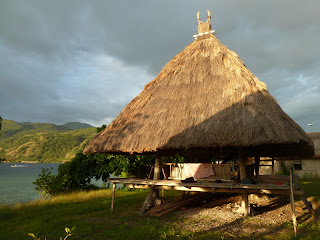It's
hard to believe that we've now spent over seven months in Asia, or
that before this trip it was a continent I'd never visited. Looking
back at the highlights I wouldn't even know where to start.
We've
deliberated for a long time over where to head from here, but have
now made a decision! Much as we've loved backpacking in Asia, we're
itching to get back into the hills. That was where this adventure started after all - those fifty amazing days trekking in the Himalayas. The most
awe inspiring views we've ever seen, the coldest we've ever been,
walking through amazing scenery day after day.
 |
| The Himalayas- where it all began |
With
that in mind, it's time to head for the mountains again! We love trekking
independently- something that's not really possible in this part of the world.
So we're swapping the beaches of South East Asia for a summer in
North America. Not a destination that originally featured in our plan (such as it was!), but that's the nature of this trip. So far we've timed the seasons in our destinations pretty well, and as the summer in the northern hemisphere starts it seems sensible to take advantage of it. We
want to experience the classic scenery of the national parks of
the USA- so familiar from pictures yet neither of us has ever been.
Our initial plan is to attempt a long distance
mountain trail- something we wouldn't be able to do on a normal fortnight's holiday. Lots more planning is needed first, but
we think it will be the John Muir Trail- a 220 mile walk through
the Sierra Nevada mountains of California. It travels from the cliffs and pine forests of Yosemite, through Sequoia and Kings Canyon
National Parks, to finish on Mount Whitney, the highest peak in the
states outside Alaska at 4400 metres. The walk is a similar distance to the
Coast to Coast in England although rather different in every other
way- crossing wilderness, wild camping, never crossing a road and travelling through bear
country.
We're under no illusions; it's going to be hard! Crossing high passes and
swollen rivers with big packs full of camping gear- food rationed and
carried in bear proof containers- but we think we're ready for the challenge. We can't wait to camp, to experience wilderness, cook
outside, wash in streams, and to get back into that exhausting but
satisfying routine of walking day after day.
 |
| Sundowners in Indonesia |
As
we prepare to leave Asia and fly across the Pacific, there are some
things we'll be happy to leave behind and others we're going to pine
for.
Actually, we're probably going to miss all of it! But we've
composed a couple of lists to remind us of some of the things we've
laughed at and moaned about while we've been here:
Some
of the things we've missed
Breakfast,
as a separate meal rather than just another dose of rice or noodles.
Muesli or fruit salad were last sighted in Thailand!
Knives.
We're not sure why forks and spoons made it over here but knives got
lost on the way. Cutting things with a spoon just doesn't work as
well!
The
smoking ban. Oh, how I've missed this! Here, everyone smokes
everywhere- holding a cigarette right in your face in a cramped bemo
with no ventilaton.
Pavements.
The kind without gaping holes down to smelly drains, or cracks big
enough to fall in.
Light
switches you can touch, without either danger of
electrocution or getting a year's worth of grime on your hand.
Running
water, ideally in a bathroom, best of all one you dare enter
barefoot.
 |
| You have to look where you're going in Indonesia! |
Some
of the things we'll miss
Hello
Mister! I imagine we won't get this shouted to us in the
States. Children won't run into the road to high-five us as we pass,
and we won't feel like celebrities posing for pictures with every
family we meet.
Our
fishy friends. We've spent so much time underwater I've
started to feel like I know the tropical fish personally. I can think
of nothing more relaxing than floating over coral watching life on
the reef.
Hammocks. When
we eventually live in a house it's going to be strung full of them!
The
sun. We've got pretty accustomed to seeing this all day,
every day. Looking at weather forecasts again will be weird.
Scooters. Zooming
around on our own transport and, when it breaks, getting things fixed
immediately for a few pounds.
Beer. I
know this is available in North America, but we probably won't be
able to afford it there!
Beach
huts. We've had some horrible rooms, but we've also had some
great ones. I'm writing this from the candlelit verandah of our
current driftwood decorated hut, listening to waves lapping on the
sand...sigh.
Buses. Mixed
feelings about this! Yes, they're cramped, crowded and bumpy, but
we've been on some memorable journeys, met lots of locals and never
had to wait for one or look at a timetable. Greyhound coaches just
won't be as fun, and they're bound not to let us ride on the roof.
Menus,
and their amusing translations into English. Anyone for a coodled
drink?
Coconuts,
enjoyed straight from the tree.
 |
| Bus travel in Alor, Indonesia |
 |
| A coconut, as fresh as it comes! |
But
first we have one last destination left in Asia, which we're really
excited about; a week in Japan. It will only be a taste
(which is all we can afford!), but we're hoping to cram it full of
quintessential Japanese experiences, from bullet trains to zen
gardens. Then all change to fly to Los Angeles, just in time for
independence day in San Francisco.
Watch this space!
Harriet
 |
| It goes without saying, we're going to miss beaches like this! |




























